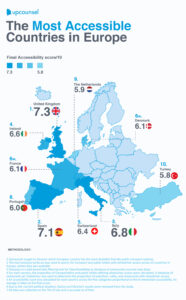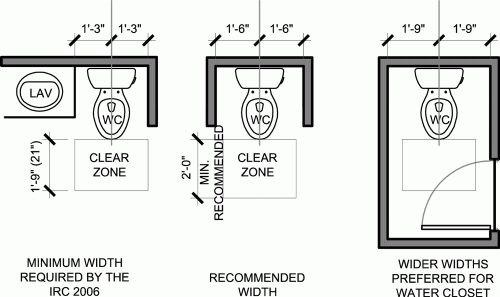Understanding UFAS: Accessibility Standards in Federal Building Design
Accessibility in design is governed by several standards. Most professionals know the Americans with Disabilities Act (ADA) and ANSI A117.1, but the Uniform Federal Accessibility Standards (UFAS) is another important code. While it may be less familiar, UFAS is still widely used for specific federal projects.
At EVstudio, we help clients navigate these overlapping standards. We also recommend hiring third-party accessibility consultants to avoid risk and improve compliance outcomes.
What Is UFAS?
UFAS stands for Uniform Federal Accessibility Standards. It was developed in 1984 by four federal agencies: the Department of Housing and Urban Development (HUD), Department of Defense (DOD), General Services Administration (GSA), and U.S. Postal Service (USPS).
UFAS was created before the ADA. It established a uniform approach to accessibility across federally funded buildings. The goal was to ensure that facilities used by the public or employees with disabilities met consistent physical accessibility standards.
How UFAS Relates to ADA and ANSI
The ADA Standards for Accessible Design became law in 1991. These standards borrowed heavily from UFAS but expanded in scope. ADA covers more facility types and applies to both public and private entities.
Meanwhile, ANSI A117.1 is a technical standard adopted into local building codes, like the International Building Code (IBC). It focuses on detailed dimensions and technical requirements for construction professionals.
The key difference is jurisdiction:
-
UFAS applies to federally owned or federally funded buildings.
-
ADA applies to public accommodations and commercial facilities.
-
ANSI applies through building codes adopted by states and cities.
Each standard serves a different legal function, and their enforcement depends on the project type.
When UFAS Applies
UFAS compliance is required when a project receives federal funding or is owned by a federal agency. Some common examples include:
-
Public housing built or funded by HUD.
-
Veterans facilities managed by the VA.
-
Federal courthouses and post offices.
-
Projects using federal grants or loans tied to construction.
For many HUD-funded housing developments, UFAS is mandatory—even when ADA also applies. These projects may also require compliance with the Fair Housing Act Design Manual, adding further complexity.
Conflicts Between UFAS, ADA, and ANSI
Sometimes, more than one standard applies to the same project. Unfortunately, these codes do not always align. Differences in measurements, reach ranges, turning radii, or signage can lead to compliance problems.
For example:
-
ADA might allow a 30-inch clear width for certain doors.
-
UFAS could require a 32-inch clear width in the same location.
-
A design that meets ADA could still fail a UFAS inspection.
These inconsistencies can create legal exposure and costly redesigns. In some cases, local building officials and federal agencies may disagree on compliance requirements.
How EVstudio Manages Accessibility Conflicts
EVstudio stays informed on all accessibility standards, including UFAS. We research each project’s funding source, ownership, and location to determine the applicable code. Our design team references UFAS technical documents when working with federal agencies.
Still, the best protection comes from third-party accessibility consultants. These experts provide code interpretations, site reviews, and certification documents. Hiring them early reduces liability and ensures that conflicting codes are addressed in the design phase as well as during construction when accessibility compliance is often unintentionally overlooked.
Conclusion: Accessibility Requires Clarity and Expertise
Accessibility requirements vary depending on funding, building type, and location. While ADA and ANSI dominate most conversations, UFAS remains critical for many federally funded projects. These overlapping codes can create confusion—but they can also be managed with the right planning.
EVstudio partners with owners, developers, and federal agencies to meet all applicable accessibility requirements. We also advocate using qualified accessibility consultants as a proactive risk mitigation strategy.
Resources:











